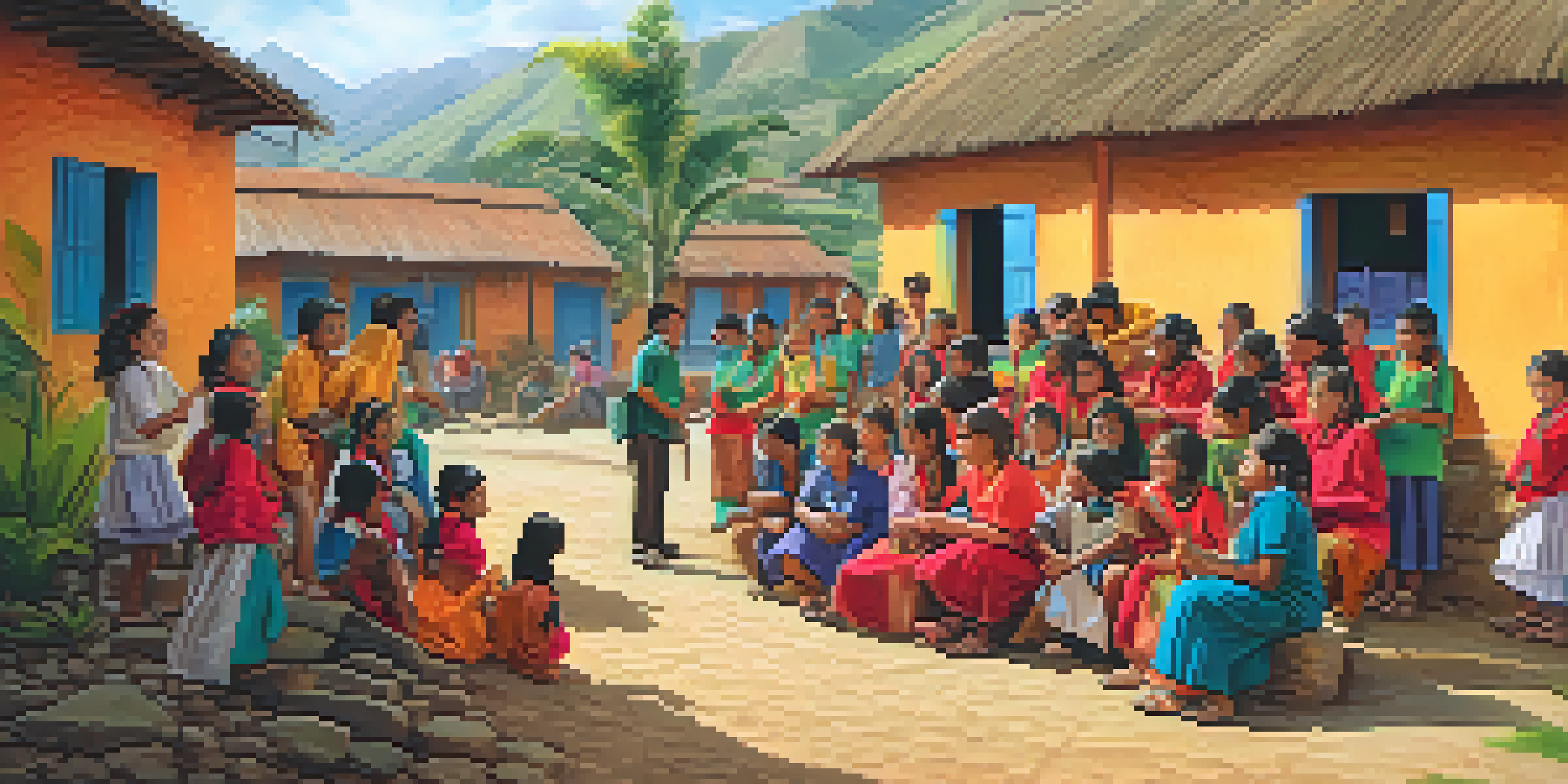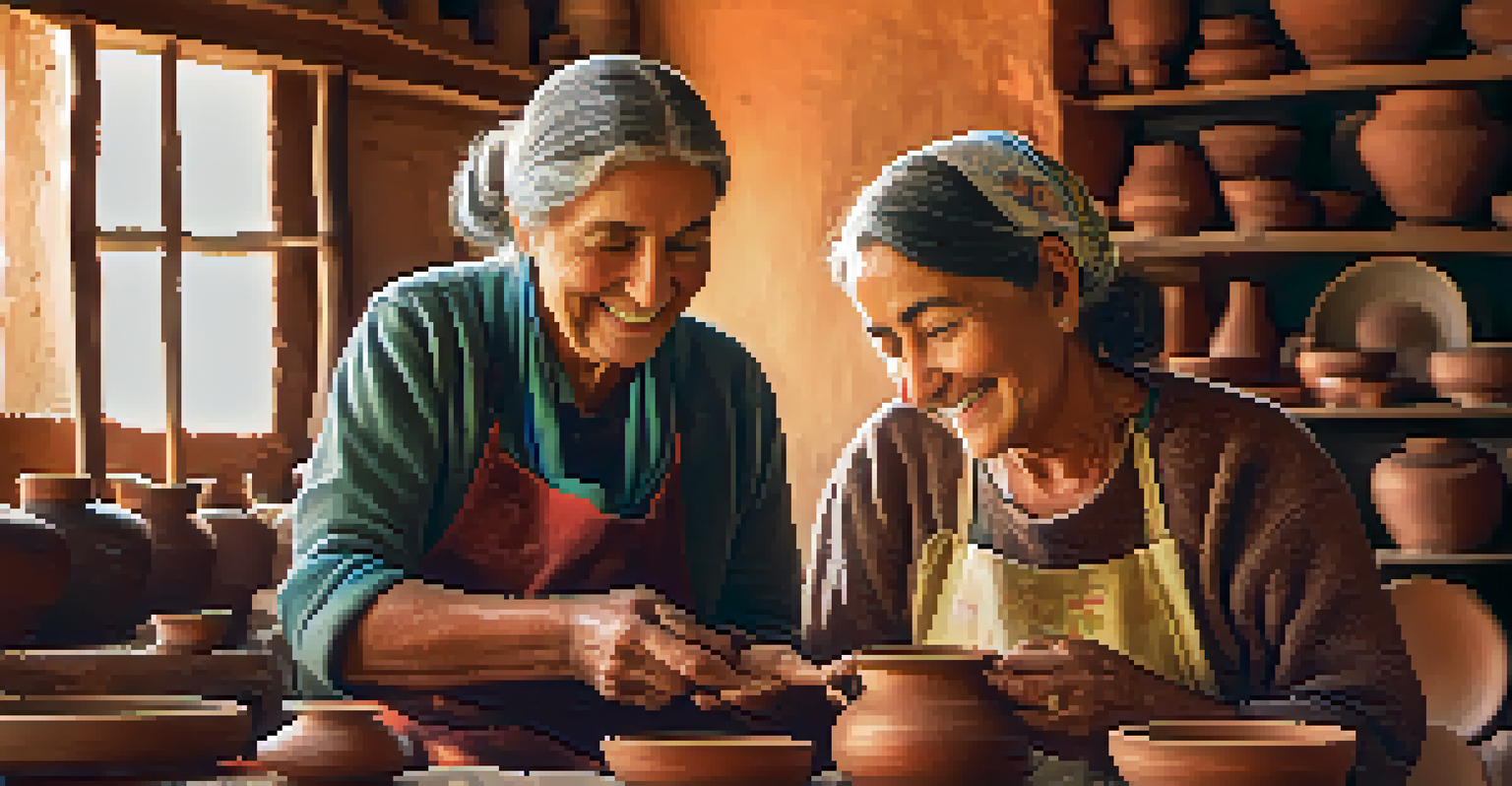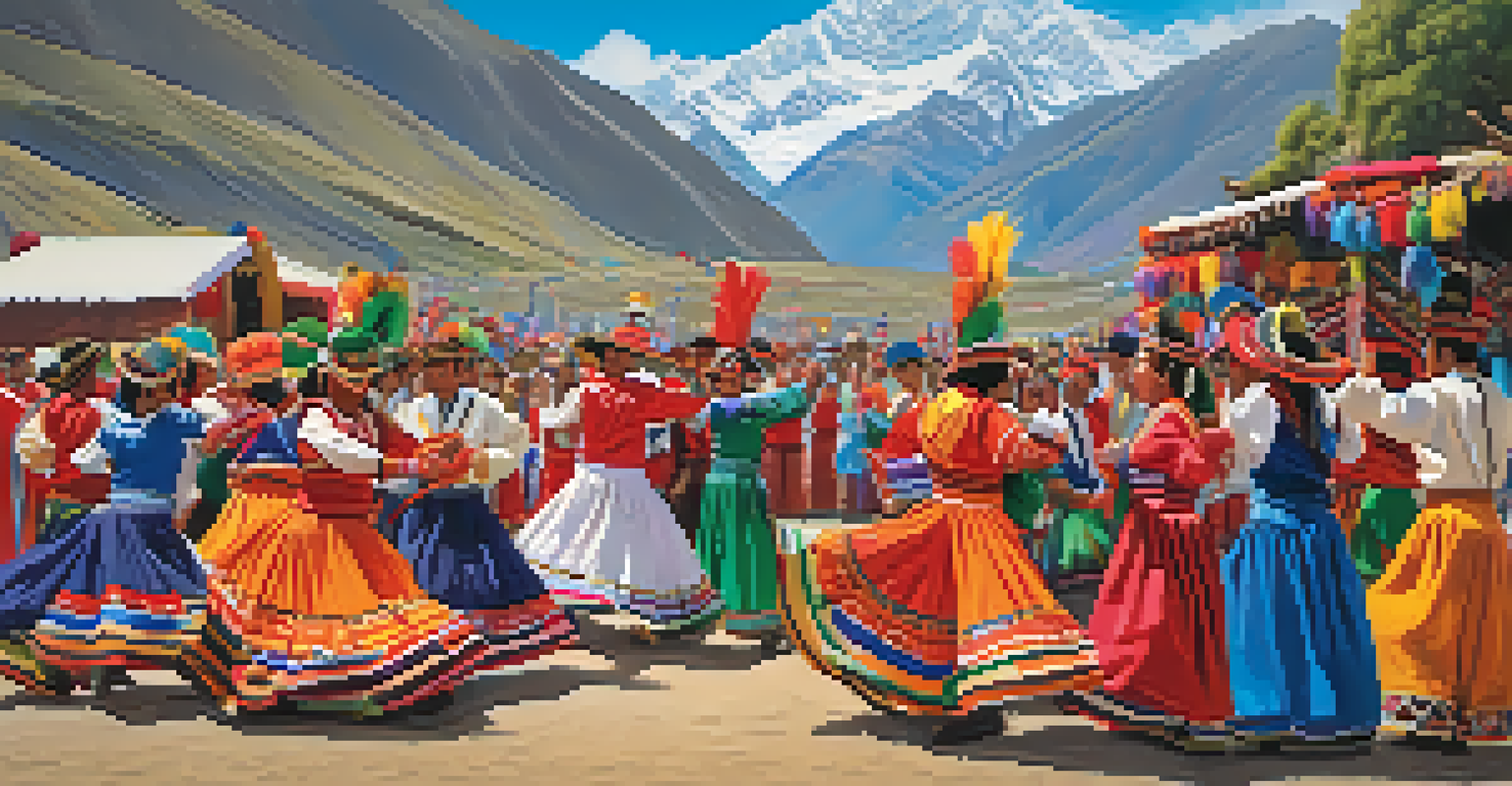Cultural Exchange Through Volunteer Programs in Peru

Understanding Cultural Exchange Through Volunteering
Cultural exchange refers to the sharing of ideas, traditions, and values between different cultures. When volunteers engage with local communities in Peru, they participate in this exchange by immersing themselves in a vibrant culture steeped in history and diversity. This interaction not only enriches the volunteers' experiences but also allows locals to share their customs and way of life.
The best way to find yourself is to lose yourself in the service of others.
For instance, a volunteer teaching English in a Peruvian village may find themselves learning about traditional Quechua practices and local cuisine. This reciprocal relationship enhances understanding and appreciation between different cultures. It's an enriching experience that often leads to lifelong friendships and a deeper understanding of global society.
Moreover, cultural exchange promotes empathy and awareness, allowing volunteers to address stereotypes and misconceptions. By living and working alongside locals, volunteers gain insights that textbooks simply can't provide, fostering a more profound respect for cultural differences and shared human experiences.
The Role of Volunteer Programs in Peru
Volunteer programs in Peru serve as a bridge for cultural exchange, connecting international volunteers with local communities. These programs typically focus on education, conservation, and community development, allowing volunteers to contribute meaningfully while experiencing the rich heritage of Peru. Participants not only offer their skills but also bring unique perspectives that can inspire new ideas and approaches.

For example, volunteers involved in conservation efforts often learn about the importance of biodiversity from local experts. This collaboration creates an environment where knowledge flows both ways, enhancing the effectiveness of conservation initiatives. It's a dynamic process that highlights the value of diverse viewpoints in tackling global challenges.
Cultural Exchange Enriches Lives
Volunteering in Peru allows for meaningful cultural exchange, enhancing understanding and appreciation between volunteers and locals.
Additionally, these programs often incorporate cultural activities, such as cooking classes or traditional music sessions, which further enhance the exchange experience. Volunteers leave with cherished memories and a deeper understanding of Peru's cultural nuances, while locals benefit from the skills and perspectives that volunteers bring.
Experiencing Peru's Rich Cultural Landscape
Peru boasts a rich tapestry of cultures, influenced by Indigenous heritage and colonial history. From the ancient Inca civilization to modern-day traditions, the country's cultural landscape is both diverse and vibrant. Volunteers have the opportunity to explore this cultural richness firsthand, from the bustling streets of Lima to the serene landscapes of the Sacred Valley.
Volunteering is at the very core of being a human. No one has made it through life without someone else’s help.
During their stay, volunteers can participate in local festivals, such as Inti Raymi, which celebrates the Inca sun god. These events provide a unique opportunity to engage with the community and experience Peru's traditions in a lively setting. Such immersive experiences foster a deeper appreciation for the cultural significance behind these celebrations.
Furthermore, volunteers often find joy in learning about local crafts, such as pottery or weaving. Engaging with artisans not only supports traditional crafts but also helps preserve cultural heritage, making the volunteer experience even more meaningful.
Building Meaningful Connections with Locals
One of the most rewarding aspects of volunteering in Peru is the opportunity to build meaningful connections with local people. These relationships often transcend language barriers, as shared experiences and mutual respect foster understanding. Volunteers frequently find themselves welcomed into homes and communities, creating bonds that last well beyond their stay.
For example, a volunteer may share meals with a local family, gaining insights into their daily life and challenges. This personal interaction can be transformative, as it provides a unique perspective on the issues faced by the community. Through these connections, volunteers can become advocates for the people they've met, sharing their stories back home.
Volunteers Impact Local Communities
Volunteer programs address community needs in Peru, promoting sustainable development through education, conservation, and health initiatives.
Moreover, these relationships can inspire locals as well. Volunteers often serve as role models, demonstrating the value of education, hard work, and cultural exchange. This mutual inspiration enhances the overall impact of the volunteer experience, leaving a lasting legacy of goodwill and understanding.
The Impact of Volunteer Programs on Communities
Volunteer programs can have a profound impact on the communities they serve in Peru. By addressing specific needs, such as education and health care, these programs contribute to sustainable development. Volunteers often bring fresh ideas and resources that can help communities thrive, whether through teaching, infrastructure projects, or health initiatives.
For instance, a group of volunteers working on a community garden project not only provides fresh produce but also teaches sustainable farming practices. This exchange of knowledge empowers locals to improve their food security while fostering a sense of community pride. Such initiatives can create a ripple effect, inspiring others to participate and contribute.
Additionally, the presence of volunteers can raise awareness about local issues, attracting further support and resources from outside the community. This collaborative effort strengthens the community's resilience and encourages a culture of mutual support, enhancing overall wellbeing.
Challenges Faced in Cultural Exchange Volunteering
While cultural exchange through volunteer programs in Peru offers enriching experiences, it also comes with challenges. Volunteers may encounter language barriers, cultural differences, and varying expectations, which can create misunderstandings. It's essential for volunteers to approach these challenges with an open mind and a willingness to learn.
For instance, a volunteer may struggle to communicate effectively with locals, leading to frustration on both sides. However, embracing these moments as learning opportunities can help bridge gaps and foster deeper connections. Patience and adaptability are key traits that can turn potential difficulties into rewarding experiences.
Building Bonds Beyond Borders
The relationships formed between volunteers and locals foster mutual respect and understanding, creating lasting connections that inspire global citizenship.
Moreover, volunteers must be aware of their impact on local communities. It's crucial to engage respectfully and avoid imposing foreign values or solutions. Acknowledging the local culture and actively listening to community needs can help create a more balanced and effective exchange.
Creating a Lasting Legacy of Cultural Understanding
The essence of cultural exchange through volunteer programs in Peru lies in creating a lasting legacy of understanding. By fostering empathy and appreciation for different cultures, these programs help break down barriers and promote global citizenship. Volunteers often return home with stories that inspire others to embark on their own journeys of discovery.
As volunteers share their experiences, they become ambassadors for cultural exchange, encouraging others to volunteer and engage with diverse communities. This ripple effect can lead to increased awareness and appreciation for global cultures, creating a more interconnected world.

Ultimately, the relationships and insights gained through these experiences can shape perspectives for years to come. By participating in cultural exchange through volunteering, individuals contribute to a legacy of understanding and collaboration that transcends borders.